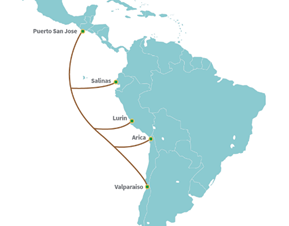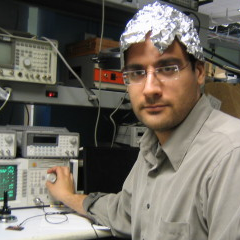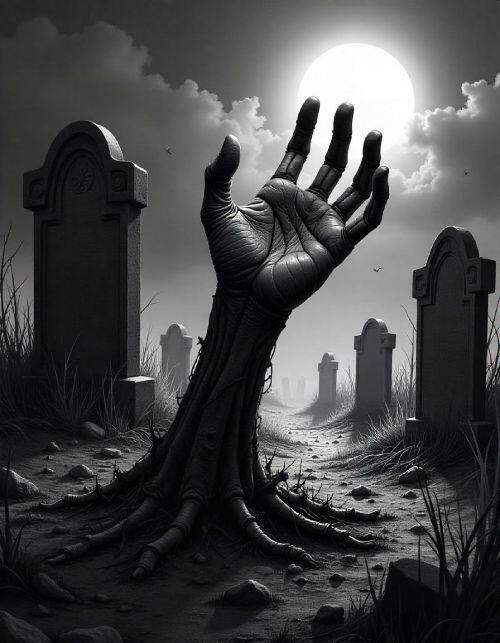Leaderboard
Popular Content
Showing content with the highest reputation since 03/03/2025 in all areas
-
I have a beta for a new program. I'll get you access in the next few days and you can give it a try.3 points
-

New Server in São Paulo - Brasil
Jose Fernandes and one other reacted to CA3LE for a topic
Sorry for the long wait. You can now select São Paulo, BR. https://testmy.net/mirror I'll add resolution later on so people in the area will automatically default to that locale.2 points -
Sharing My Average
Jose Fernandes and one other reacted to julio1909 for a topic
myaverage?q=91383589954064&type=Comp_ID&var=Month2 points -

My Dream Server is a Gaming PC
LigmaBalls and one other reacted to spudler_t for a topic
Funny how you mentioned yo do not play games back in 2008 I was building the armor plating for the MRAP (Mine resistant Ambush Protected) Vehicles The same Tan 4X4 Ones we left in Afghanistan they have shown on the news Moving those plates by hand I ended up rupturing a disc in lower back and smashed a nerve disabling me so I was attempting to get a degree in Machine technology, doing CNC Programming on CNC Lathes and Mills but ended up realizing I could not stand for the 4+ Hours at a time needed to do that. anyway to make a Short story long I got a ASUS ROG G73 SW top of the line Gaming Laptop (Late 2010) yet never played a single game till 2019 when I came across iRacing LOL2 points -

New Server in São Paulo - Brasil
LigmaBalls and one other reacted to CA3LE for a topic
Hi Jose, When I get a moment I'll add São Paulo for you.2 points -
Sorry man, for some reason it got installed in my datacenter. 😜 This server is running TestMy.net now and I definitely feel the difference. Had a few networking issues over the weekend. My pfSense server had issues, something bugged out. It was my oldest VM, maybe it had some kind of legacy setting somewhere causing issues. The backups were jacked as well, so I just deleted it and put up a new one... Not really a big deal, that pfSense router is really only for my internal, non-production network and none of TestMy.net services run through it. So not a big deal, right? WRONG! Side effects are real. I didn't realize that before I had specifically setup pfSense without IPv6. With the default install it ran normally... until I got to my datacenter and reset my switches. I do this sometimes when I visit, just to get a fresh boot on them. Well, most things came back up normally but TMN was down. Everything indicated that it should be up, I'm getting pings all over the place as expected. Why isn't it working? Very stressful situation. This should have been a routine visit to quickly rack the new server. But now, nothing is working right! To make matters worse I'm on my laptop where I'm already not as comfortable working. Connected with hotspot on my phone and I realize that I only have a USB-C cable for my phone and no USB-C on my laptop. My battery's at like 30%. So now it feels like Mission Impossible. I was running in circles at this point, so I took my hands off the keys and thought for 5 minutes. ... then came up with... "Default Route." I look closer at the networking on the host and client. I then see an IPv6 address assigned to an adapter that should only have an internal IPv4 address. This device is connected to a VLAN. So traffic was trying to route out the adapter connected to VLAN. The gotcha is when an IPv6 address is assigned on the same adapter as an IPv4 address that takes an isolated route. Another fix is to tell the adapter "never use as default route". A different VM had a spare network adapter that wasn't configured, had been sitting like that for years. When this happened, it did DHCP, got an IP and then default routed to that adapter. In that case it was an IPv4 address. Same kind of issue, a little different. So I worked out a few kinks. When it came down to it, lambo joined right into the cluster, replicated my VMs and migrated them without issues. The lesson for me, when you're flustered... take a step back and think. The answers often surface.2 points
-

Since 2001 5 years prior to Speedtest.net? HMMM???
LigmaBalls and one other reacted to CA3LE for a topic
Well said. TestMy.net started in 2001... but my first internet speed test became popular in 1996, on accident. Was pretty crazy trying to run it early on, not knowing anything. No real tools to even learn online yet either. I hope one day more people find TestMy.net again. I'll just keep building.2 points -
This is cool, Ive been using or around Testmy.net for a long time, I assume my slower memory recall (Personal) Is due to getting older but it seems like back when I first started using The site I do not remember picking servers or maybe 2 or so been awhile I have my PC 99% for iRacing and I have ASUS STrix Z-490 E Gaming MB i7-10700K 5.2Ghz All Core 32Gb Corsair 2600 DDR4 ROG Strix RTX 3060 Ti OC V2 Corsair 280MM AIO Every item was either from iRacing driver sale or Ebay The most shocking is the GPU it is a Diamond or a Winnining silon ticket as it easily runs at 2100Mhz GPU with 18002Mhz Vram about a 35% boost over V1 cards In mAx power for sure2 points
-
Hiya the site is great, thank you so much Can there be an automated test for the latency? I want to see if latency varies throughout the day. So like the automated test for download speed that checks every hour, can there be one for the latency? or if there's a way I can automate it myself, is there a command line I can run to do the latency test? or does it only work through the browser? Thank you!!1 point
-
My Internet Speed to São Paulo, Brazil, South America
CA3LE reacted to Jose Francisco for a topic
Bom dia Brasil 26.03.2025 Pensei que poderiam gostar de saber que existe um novo servidor em São Paulo onde a população é maior e com Latência Baixa também no o Rio de Janeiro. Em 2025, o Brasil tem 183 milhões de pessoas conectadas à Internet talvez o 5º do Mundo? e talvez o 3º onde passam mais tempo na Internet. TestMy.net : Teste de Velocidade Preciso para Internet Rápida TestMy.net : em resumo TestMy.net é uma ferramenta de teste de velocidade de internet projetada para usuários que buscam resultados precisos e detalhados. Ideal para consumidores e técnicos, oferece informações claras sobre a velocidade de download e upload, além de diagnósticos avançados diferenciando-se de outras plataformas no mercado. Quais são os principais recursos do TestMy.net? Resultados Precisos e Confiáveis O TestMy.net utiliza tecnologia avançada para fornecer dados precisos, diferenciando-se de testes básicos de velocidade. Teste de velocidade baseado em navegador, eliminando influências externas de aplicativos e aceleradores. Medições independentes de ISPs, garantindo que os resultados reflitam a realidade da sua conexão. Análise Detalhada de Desempenho A plataforma oferece uma análise abrangente do desempenho da sua internet, permitindo comparações detalhadas. Histórico de resultados para acompanhar mudanças ao longo do tempo. Gráficos interativos que facilitam a visualização das variações de velocidade. Comparativos e Diagnósticos Avançados Obtenha diagnósticos avançados que revelam problemas ocultos em sua conexão. Comparação de resultados com outros usuários em sua localização ou ISP. Identificação de gargalos e sugestões para melhorias. Atraente e envolvente, TestMy.net é a escolha ideal para quem busca desempenho superior e eficiência na gestão de sua conexão à internet. No Forum "Reddit" também falam muito bem do TestMy.Net Tenha um bom dia Amigo jose Translated English Good morning Brazil 03/26/2025 I thought you might like to know that there is a new server in São Paulo where the population is larger and with Low Latency also in Rio de Janeiro. In 2025, Brazil will have 183 million people connected to the Internet, perhaps the 5th in the world, and perhaps the 3rd place where people spend the most time on the Internet. TestMy.net : Accurate Speed Test for Fast Internet TestMy.net: in short TestMy.net is an internet speed test tool designed for users looking for accurate and detailed results. Ideal for consumers and technicians, it offers clear information about download and upload speeds, as well as advanced diagnostics, setting it apart from other platforms on the market. What are the main features of TestMy.net? Accurate and Reliable Results TestMy.net uses advanced technology to provide accurate data, differentiating it from basic speed tests. Browser-based speed test, eliminating external influences from applications and accelerators. Independent measurements from ISPs, ensuring that the results reflect the reality of your connection. Detailed Performance Analysis The platform offers a comprehensive analysis of your internet performance, allowing for detailed comparisons. Results history to track changes over time. Interactive graphs that make it easy to visualize speed variations. Advanced Comparisons and Diagnostics Get advanced diagnostics that reveal hidden problems with your connection. Compare results with other users in your location or ISP. Identification of bottlenecks and suggestions for improvements. Attractive and engaging, TestMy.net is the ideal choice for those seeking superior performance and efficiency in managing their internet connection. On the "Reddit" Forum they also speak very well of TestMy.Net Have a good day Friend jose1 point -
I haven't had a chance to open this for you yet. Have a few areas I'd like to modify before I give you access. After this weekend I'll flip over into programming mode and get access to that new tool.1 point
-

Automatic latency test
Jose Francisco reacted to Science for a topic
Hey that's amazing thanks for getting back to me - did you make any progress with the beta? I have a little script that tests on the command line using ping but would love one that uses your latency measure instead thanks!1 point -

New Server in São Paulo - Brasil
LigmaBalls reacted to Jose Fernandes for a topic
Hello Testmy.net Congradulations to have an Excellent Service. Today we have thousands of Internet Speed Tests around the world with speeds up to 1000 Mbps. 10 (ten) GB Speed Test might be a good choice to install in São Paulo, Brazil because most of the population live in the South East. The climate is Brazil is between 26 and 30 ºC Ping from Sao Paulo to Santiago TMN server should be near 50 ms. TMN is excellent to test your Internet Service Provider and fans can enjoy ping test from you location on the following site https://www.meter.net/tools/world-ping-test/ After Dial UP and ADSL Internet, my Internet in 2015 ( ten years ago ) was Internet Fiber with 60/3 Mbps. Today we have more Internet Speed because of TV, YouTube and wireless devices. ❤️1 point -
I think you might be running into a encoding issue rather than a data limitations issue. Lets start ruling that out beforehand. Can you give us a full speclist of your system and what you're streaming?1 point
-

New Server in São Paulo - Brasil
Jose Fernandes reacted to CA3LE for a topic
I haven't forgotten. It's a little bit of a process adding a new location. Just finishing up some other work then I can shift and get this added for you.1 point -

New Server in São Paulo - Brasil
CA3LE reacted to Jose Fernandes for a topic
1 point -

My Dream Server is a Gaming PC
LigmaBalls reacted to CA3LE for a topic
Over the decades I've always strived to have the fastest servers I can afford to host TestMy.net. My journey with hosting has taken me into a colocated datacenter where I pay for cabinet space, power & internet connection and bring in my own equipment. When I first started using colo I built everything out with brand new, current generation servers and networking gear. Over the years I added servers and built up a High Availability Proxmox cluster. Adding servers I found that eBay was definitely my friend. Now I could afford servers that only a few years earlier often went for nearly 10X what I was able to get them for "off lease". Each time I added a new server, it was more powerful than the previous. Over this time I'm adding more resources, things are getting faster. Even my first servers were full solid state, employing arrays of 4 Samsung 850 Pro SSDs. But things really started flying with the advent of Optane storage. A game changer... really, it was too good. (and now it's gone.) Fast forward to 2024. I get a generous donation of servers, the person doesn't care what I do with them, they're just happy to give them to me. They're newer than my servers, 2nd version into the next generation of CPU. So quite a bit newer. I get one of them setup with the same Optane storage I run in my current master server and start benchmarking. It's not really faster and doesn't justify switching servers. Sometimes it was slower. I assume because my servers are higher clock speed, highest end of the CPU SKU. Scratching my head, I really thought being so much newer I'd get a much better result. I take the storage out and pop it in a gaming rig... another machine recently donated to me by a friend. This PC happens to have hardware from the same year as the server I just tested. I run the same tests and had to do a double take. Not only was it faster on the gaming rig, it was WAY faster. This made me reimagine my server topology. Maybe it was time to build with consumer hardware. Here I had a setup that was a fraction of the cost that was out performing in real world scenarios. The better single thread performance and higher clock speed, faster memory... it all makes sense. There's more competition in the consumer market, things cost less. So I sold those servers to someone who can better utilize their resources. Extremely nice servers but for my use case here, they had too much of everything. As soon as they were sold I ordered parts for my next build. Promptly put it together and got to testing. Minimum, 2.5x faster at everything. Average is 3x faster and in some cases I've seen over 6x faster. It has completely blown me away. What is the magical setup? Nothing much really, minus storage I think it cost my about $900, including a piKVM setup to remotely control the machine. Much less than any of my used enterprise servers cost me. Here's my build. AMD Ryzen 7 9700X 8-Core, 16-Thread Unlocked Desktop Processor G.SKILL Ripjaws S5 Series (Intel XMP 3.0) DDR5 RAM 64GB (2x32GB) 5600MT/s CL28-34-34-89 Optane 905p (zpool) and Samsung 960 Pro (OS) ASUS Prime B650-PLUS WiFi ID-COOLING IS-40-XT Black - 47mm Height Low Profile CPU Cooler EVGA 750 BP, 80+ Bronze 750W PSU Rosewill 2U Server Chassis RSV-Z2900U BTF-LIGHTING WS2812B 2PCs 19in Individually Addressable 2GB Raspberry pi4 Geekworm KVM-A8 (kit for building a piKVM) 10G network card It's only a 65 watt TDP CPU! very easy to cool in a constrained (or SFF) build like this. A single half dollar sized CPU out performs all of my dual Xeon systems. Yes, I can't run a terabyte of RAM with this setup but I don't need to. My current systems are 128GB, I figure I only really really need 64GB with this CPU backing the system. Especially in single thread performance the new Ryzen system blows all my other systems away. This type of gain will be felt everywhere, especially in mysql queries and responsiveness. It still excels in multithread and even has a larger cache than my Xeons. It really wins for me on every level. And yes, RGB was a requirement. I never put RGB in a computer, not really my thing. But I figure this is a gaming PC at its core so for $13, why not. I can control them in linux but it adds a bunch of unnecessary packages, I like my base PVE to be as simple as possible. So default rainbow it is. lambo-2025-lq2.mp4 I haven't been necessarily doing it wrong all these years. Without the low TDP and high performance of the 9700X this build would be more challenging. These are recent developments. There's basically zero redundancy in this server. So, it also helps having a PVE cluster that has a bunch of reliable machines, to back up this consumer grade hardware. I can't wait to bring Lambo into production!1 point -

Since 2001 5 years prior to Speedtest.net? HMMM???
LigmaBalls reacted to spudler_t for a topic
I was looking to see when Testmy.net started as I Swear (Even though my profile says 2009) I came across this site approx Sept or Oct of 2001 or 2002. I lost my login info and think I had to start over in 2009 as I know I used the site in 2005 as I was always testing the Internet at a club I did music for . Back to the Title, Being a site for 5+ Years prior to speedtest why do you think they have more visitors (or considered #1 Site to test)? I have my opinion. Also I have yet to have a ISP ever tell me to use this site though have had them argue with me about the results until I show the history and when the speed dropped as well as consistency in the results My Opinion, I think a lot of people do not like the facts or truth even if ignoring it is detrimental , Would rather have results that match what the ISP says and they pay, when they get the accurate results more than likely it is not what they want to or have seen, Plus when you go say something to say Xfinity or Other ISP's that you feel the sped is not what you pay for they want you to test where they know they will get a higher speed and it is hard to argue with that unless you have been doing this awhile and have had to deal with all the scripts they read that state it is on the customer end, I can list things till my KB wears out Honestly I think the only times I knew for sure it had to be either a Xfinity issue (Or 1 time iRacing Server issue) was thanks to be able to test here and use my history or results to compare with. Sadly until they make a set of test parameters/Rules as far as Internet Speed Testing a lot of people will be missing out on the bigger picture about their connection speed. I am just thankful we have Testmy.net as a tool to use as well as all the Time and $$ CA3LE has spent on the site1 point -
Since 2001 5 years prior to Speedtest.net? HMMM???
Frank225 reacted to Robert Payer for a topic
Thanks for the link Frank. I'll pass on AC/DC😞1 point -

New Server in São Paulo - Brasil
CA3LE reacted to Jose Fernandes for a topic
My internet speed to TMN Server in Santiago, the beautiful country of Chile https://testmy.net/db/Wpel49BXW.M5AfqxWFs1 point -
Msn messenger
Frank225 reacted to LigmaBalls for a topic
has anyone used msn messenger becuase you can use it again if you go to escargot.chat you can use msn messenger go here for msn or windows live Client Support Status: Almost complete MSN 1 Supported1 6 MSN 2 Supported MSN 3 Supported MSN 4 Supported MSN 5 Supported2 MSN 6 Supported2 MSN 7 Supported2 3 WLM 8 Supported2 4 5 WLM '09 Supported2 5 WLM '11 Not yet WLM '12 Not yet Notes 1. These do not use secure login, so we recommend using a separate password, which you can manage in your Legacy Settings. 2. MSN 5/6/7/8 and WLM '09 work on Windows XP and Vista, but have issues logging in due to known incompatibilities with the HTTPS protocols between the server and the affected OSes and us being unable to tweak our setup to effectively support those systems. Refer to this guide for a fix. 3. MSN 7 supports receiving offline messages (OIMs), but can't send them to others. 4. Only 8.1.0178 and 8.5 are known to work; others might not. 5. While WLM 8 and '09 can work on Windows XP, they have some incompatibilities out of the box because of the way older systems handle SSL, as such, we recommend using a newer operating system or trying the same fix as MSN 5/6/7/8 (point 2) 6. MSN 1 only supports login on @hotmail.com, however simply enter your username without @escargot.chat and ignore the @hotmail.com part.1 point -
best speed test for me
LigmaBalls reacted to madhopsman for a topic
Well, this is the best test results i've ever gotton on my adelphia. ::: Download Stats ::: Connection is: 4136 Kbps about 4.1 Mbps (tested with 1496 KB) Download Speed is: 505 KB/sec Auth Code: 2062041 (validate at http://www.testmy.net) Bottom Line: 74 times faster than 56K you can download 1MB in 2.03 second(s) Validation Link :: https://testmy.net/cgi-bin/auth_check.cgi?ta=&top=&align=&num=2062041&kbps=4136&gen=gen&a=4.57142857142857&b=2.28571428571429&c=1145.142857142861 point -
Msn messenger
Frank225 reacted to LigmaBalls for a topic
i also found this post who gets really close to useing wlm 11 https://wink.messengergeek.com/t/windows-live-messenger-2011-connect-to-local-server-is-this-possible/18540 but there is a forum called messenger geek and it has lots of helpful stuff1 point -
best speed test for me
Frank225 reacted to LigmaBalls for a topic
nice the oldest computer i had in the basement was a powermac G5 https://en.wikipedia.org/wiki/Power_Mac_G5 and its the scary conductive watercooled one because for some reason they put the powersupply under the watercooling system and it would leak and corrode the while thing and since it was conductive it would short some how min hadn't leak1 point -
best speed test for me
LigmaBalls reacted to Frank225 for a topic
My first PC was a 486 with 40 MHz, Windows 3.11, CRT display, dial-up internet with US Robotics V90 modem. Take care1 point -
My Dream Server is a Gaming PC
Frank225 reacted to LigmaBalls for a topic
bro i always wanted something like that i use a dell optiplex 7050 micro as a beam ng drive server and as my gaming pc that was actually good Device name DESKTOP-6IE4HL1 Processor AMD Ryzen 5 1600 Six-Core Processor 3.20 GHz Installed RAM 32.0 GB System type 64-bit operating system, x64-based processor Pen and touch No pen or touch input is available for this display RTX 2080 MSI Sea Hawk x https://www.msi.com/Graphics-Card/GeForce-RTX-2080-SEA-HAWK-X/Specification1 point -
best speed test for me
Frank225 reacted to LigmaBalls for a topic
my old dell dementia got 1 Mbps on internet thats supposed to get 500 (it had a 10base-t ethernet card) i was like 5 using internet explorer 51 point -
my home internet speed
xs1 reacted to LigmaBalls for a topic
my home internet speed through a old 2012 netgear switch connected to a gaming routor with a 100 feet flat cat 5e ethernet (supports 1 gigabit) https://www.downloads.netgear.com/files/GDC/GS605AV/GS605AV_IGprt_20sept2012.pdf my specs Processor AMD Ryzen 5 1600 Six-Core Processor 3.20 GHz Installed RAM 32.0 GB System type 64-bit operating system, x64-based processor Pen and touch No pen or touch input is available for this display Ethernet realtek PCIe GbE Famliy controller1 point -
school wifi from a school chromebook
Frank225 reacted to LigmaBalls for a topic
1 point -
school wifi from a school chromebook
Frank225 reacted to LigmaBalls for a topic
its not elementary school middle school1 point -
1 point
-

school wifi from a school chromebook
Frank225 reacted to broderickc for a topic
for school internet on a low end device thats farly surprizing. bet everythings restricted tho.1 point -

New Server in São Paulo - Brasil
LigmaBalls reacted to Jose Fernandes for a topic
Maybe some subscribers like to learn aproximate pings from cities to cities. https://wondernetwork.com/pings ❤️1 point -
Since 2001 5 years prior to Speedtest.net? HMMM???
Frank225 reacted to Robert Payer for a topic
What is a decent speed for Telstra Broadband in Australia?1 point -
Is this what was talked about in the white house earlier??1 point
-
That's the CPU I have in the gaming rig that started the idea to build this Ryzen server. Great CPU.1 point
-
I thought you were shipping this thing to me ? 😆1 point
-
best speed test for me
LigmaBalls reacted to Frank225 for a topic
Hello from Studio B. Today, in many places with 4 Mbps is still a Gift of Science and Amazing Grace. My grandfather lived 19 years in Nevada without Internet. He faded away he dindn`t die on his mind. Remember General Douglas MacCather? April 19, 1951. 'Old soldiers never die-they just fade away.' From your neck of the woods I like "bring me back to life" by Evanescence from California and Southern Ghotic music. I belive Amy Lee have Symmetrical Internet like 1000/1000 Mbps. Bruce Lee might have died because of cerebral edema in 1973. Peter Steele from Type O Negative, New York passed away but before he gave me is autoghaph and told me he was not a fan of Manowar. and rats can be a problem for Internet cables in NY. I think TMN tets with "multithread" on default mode is better for the majority of the people on earth to be happy. Optimum and Comcast Xfinity are my fovorite ISP in the USA. For Canadians can read the following. [link removed] 14 October 2024, 00h20 UTC Cheers Frank Internet speed at 20km from my house and 10km from the company installations with the plan of 24 or 12/1 Mbps. The test was done from the most westerly place from europe, at a server 2000 Km away.1 point -

best speed test for me
LigmaBalls reacted to CA3LE for a topic
1 point -
best speed test for me
LigmaBalls reacted to Frank225 for a topic
TMN speedtest wireless 5GHz. Router Fiber Gateway GR141/140, made in Aveiro, Portugal by Altice Labs. https://testmy.net/db/gqZ4-Tjg6.-qcLzNe0C https://testmy.net/gqZ4-Tjg6.-qcLzNe0C.png We don´t have Internet symmetrical speeds Many families still have ADSL We are happy to have 100Mbps upstream Therefore put a LIKE ❤️ Have a Good Day or Good Night with " Xutos e Pontapes " and " Diego Miranda " sound. We will be back another day1 point -
best speed test for me
LigmaBalls reacted to Frank225 for a topic
11 October 2024 From our house on the Island, Love & Peace to the World.❤️☮️ 20 years after Madhopsman Post our Internet speed is 125 times faster than 4 Mbps with 500/100 Mbps fiber optic cables and GPON technology. GPON technology, downstream/upstream speed - 2.5/1,25Mbps XG-PON - 10/2.5Gbps XGS-PON - 10/10Gbps (symmetrical) Internet 4 Play Package: TV | Telephone | smartphone/cellphone | Internet 500/100 Mbps. From one of the 3 (three main) ISP in Portugal. (MEO, NOS Vodafone). The services, quality and prices are similar. TMN https://testmy.net/db/ZL5vVx5Cw.BfwYDlQcA https://testmy.net/ZL5vVx5Cw.BfwYDlQcA.png Like 👍 TMN speedtest wireless 5GHz. Router Fiber Gateway GR141/140, made in Aveiro, Portugal by Altice Labs. https://testmy.net/db/gqZ4-Tjg6.-qcLzNe0C https://testmy.net/gqZ4-Tjg6.-qcLzNe0C.png1 point -
best speed test for me
LigmaBalls reacted to Frank225 for a topic
56Kb Robotics Modem was good. https://support.usr.com/v92/1 point -
1 point












